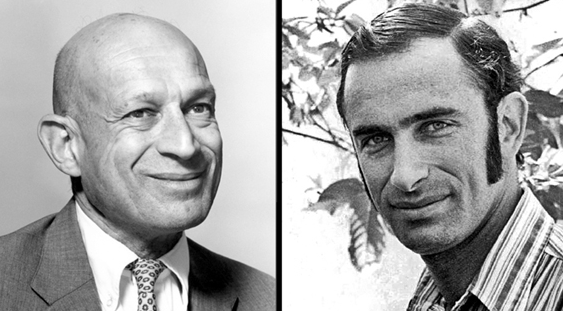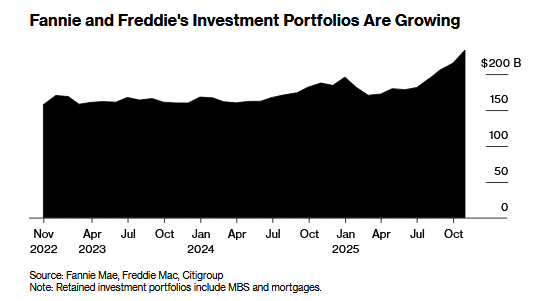
The bet between Julian Simon and Paul Ehrlich shows a fatal flaw in how most people think about inflation.
Are you familiar with the bet? Ehrlich wrote a book titled The Population Bomb. He held a pessimistic view of the future, in which population growth would outstrip resources (essentially the same as Thomas Malthus).
Simon disagreed. So in 1980, they made a famous bet. Ehrlich thought that the real cost of commodities would be higher in 10 years. Simon said they would be lower.
They picked a group of five metals, to watch their prices. And made their bet, just at the end of the cycle of rising interest rates and rising prices that had begun after WWII. The majority of the decade occurred under the falling cycle which still prevails today. It is likely that neither of them were aware of the correlation between interest rates and prices observed by Gibson 57 years prior to their bet. In any case, in 1980 all they had experienced for decades was the relentless rise of both. So Paul Ehrlich would seem to have taken a very conventional view. And Simon would be the bold contrarian.
Between 1980 and 1990, three of the metals fell in price. But the bet was not based on what people call the nominal price. This is, you know, the actual price paid by actual buyers to actual sellers who actually mine and smelt actual metal. It’s something else.
Primer in Monetary Pseudoscience
The value of the dollar is falling, and therefore economists seek a way to adjust the dollar. If such a way could be found, then one could compare the inflation-adjusted 1980 dollar to the inflation-adjusted 1990 dollar. Or the 1900 dollar. Or the 2020 dollar.
It seems a simple idea, as pseudoscience often does. It’s tempting and convenient. You just have to design a basket of consumer good. You just presume that these goods are a proper and representative measure of the things people buy. Nevermind that even the advocates of this approach do not agree on which goods should be included and which excluded.
Also, you ignore when, say, horse-drawn buggies are replaced by cars and hence there is no more need for buggy whips. Plus don’t mention improvements in the goods themselves. A 1980 car is not remotely comparable to a 2020 car. The 1980 car was before even that beacon of mediocrity known as the “K Car”.
Anyways, pay no need to this cognitive mess. And heed not your third grade math teacher, who said that you cannot add apples to oranges. Instead, be mesmerized by modern monetary magicians who insist that you absolutely can, if you’re making an index which includes apples and oranges and fuel and cars.
You just need to take a weighted average of the prices of the arbitrarily-chosen goods. Oh, by the way, you have to assume that consumer goods have constant real value. This is necessary to make the next Grand Canyon leap to the notion that consumer goods prices can be used to adjust the unit of measure of value itself.
Oh. Sorry. We forgot one more assumption: that monetary debasement is a scalar; that is, there is only one dimension. One way that debasement affects the dollar. And therefore we need only look at one variable. Consumer prices.
Don’t worry, boys and girls, we are doing science!
With those unwarranted assumptions and bogus inferences behind us, we have a consumer price index (CPI). We’re ready for the part of the science experiment that is guaranteed to amaze the parents and younger siblings of any 8-year old with a science experiment kit. He dips a white strip of paper into a glass containing clear liquid, and… presto chango abracadabra… the strip turns blue!
We look at the year-on-year change of the CPI, and adjust the dollar accordingly. For example, if CPI doubled between 2021 and 2022, then the 2022 dollar is adjusted to be worth half of the 2021 dollar.
The Cash Value
There are two reasons why people promote junk science. One is that it’s easier than doing real science. The other is that it promotes a view they arrived at non-scientifically. They use pseudoscience to bolster their financial interests or political policies.
While it is certainly true that this attempt to adjust the dollar is easy and tempting, that does not fully explain the prevalence and vehemence of this approach. It would be even easier to measure the dollar in gold (but that is the One Thing That Must Not Be Done).
Our monetary central planners—and their court-economists—prefer to redirect everyone’s attention away from the grave harms that come from their relentless counterfeiting of credit, and their endlessly falling interest rate. So monetary criticism is channeled into the relatively harmless pastime of consumer price obsession.
The Switcheroo
The Simon-Ehrlich bet hinged, not on the nominal prices of their selected commodities (metals), but on their real prices. That is, fictitious prices that no one buys or sells, based on the adjustment to the dollar which is based on changes in the CPI.
All five metals dropped in real terms. Simon won the bet. And everyone assumes the bet settled the debate between the two men. Not quite.
In the haste to find an easy way to adjust the dollar, those who would perform monetary science have overlooked a subtle but profound flaw in their methodology. And it fatally undermines the Simon-Ehrlich bet.
To see the mistake, let’s look at how consumer goods are manufactured. A major ingredient is commodities. Another major ingredient is energy—and the major ingredient in energy production is a commodity (e.g. oil). Consumer prices are heavily dependent on commodity prices.
To calculate the real prices of commodities, they are:
- Starting with the nominal prices of commodities
- adjusting these nominal prices
- by adjusting for inflation the unit of measure itself, the dollar
- which is done by measuring changes in the prices of consumer goods
- that depend heavily on commodity prices!
Let that sink in. They want to calculate the real price of each commodity. So they adjust the dollar. The adjustment is based on the price of the goods made from the commodity.
It’s a self-referential calculation.
It should be clear that if you used a commodity price index to adjust the dollar (instead of the consumer price index), then it would show that real commodity prices are not changing at all. This is because the dollar would be adjusted by precisely the amount that the nominal prices of the commodities changed, and therefore the new real price would be the original nominal price.
With CPI used as the adjustor, real commodity prices do change. They change because commodities are not 100% of the cost of consumer goods. Generally, manufacturers become more efficient as they keep optimizing their businesses. Parts that were once made of metal, are replaced with plastic. Plastic parts can be made lighter, by making them thinner where strength is not needed.
Manufacturers are also improving their products, adding more features. Just compare a 2020 car to that 1980 car. The 2020 car does not weigh any more (it probably weighs less), so by this rough measure the present-day car does not use more commodities than the 1980 car. However, a much greater quantity of other ingredients go into it, such as engineering labor and manufacturing tools.
Meanwhile, regulators and taxinators are fighting this relentless drive to reduce ingredients and hence costs, by force the inclusion of more and more useless ingredients. These are ingredients that consumers do not value, and often do not even know about. For example, expanding employee bathrooms to be ADA-compliant. Or the legal fees related to audits, licenses, and regulatory inquiries. Economists blithely say that the dollar has lost purchasing power, but the dollar is actually buying more than ever before. It’s just buying different things, such as compliance officers.
The Simon-Ehrlich bet hinged on the proportion of the cost of consumer goods that comes from the raw commodity ingredient cost relative to the other ingredients including useless ingredients.
In other words, if useless ingredients forced onto retailers and manufacturers grow into a larger and larger percentage of the consumer price of the goods, then by definition raw commodities are a smaller percentage of the consume price.
And as an artifact of this shift in proportion, the inflation-adjusted price of commodities is reduced from what it would be.
Julian Simon vs Paul Ehrlich
This is not what Julian Simon and Paul Ehrlich believed they were betting on. They thought they were betting on the ancient zero-sum fallacy. They thought they were settling the question of whether man’s reason increases productive capacity at a faster or slower rate than his libido increases the population.
For what it’s worth, we believe that reason wins hands-down. There is no question today that the quality of life is better in 2020 than it was in 1980. Perhaps we do not consume more commodities, or maybe we do, but we eat more and we have better-made and better-functioning products.
We have got to get monetary science out of its Medieval period. Today, most thinking about money is as scientific as thinking about astronomy was prior to Copernicus. In the five centuries since he taught the heliocentric model, the methods of science were developed. They desperately need to be applied to money and credit.
© 2020 Monetary Metals
Full story here Are you the author? Previous post See more for Next postTags: Blog,Featured,newsletter


































